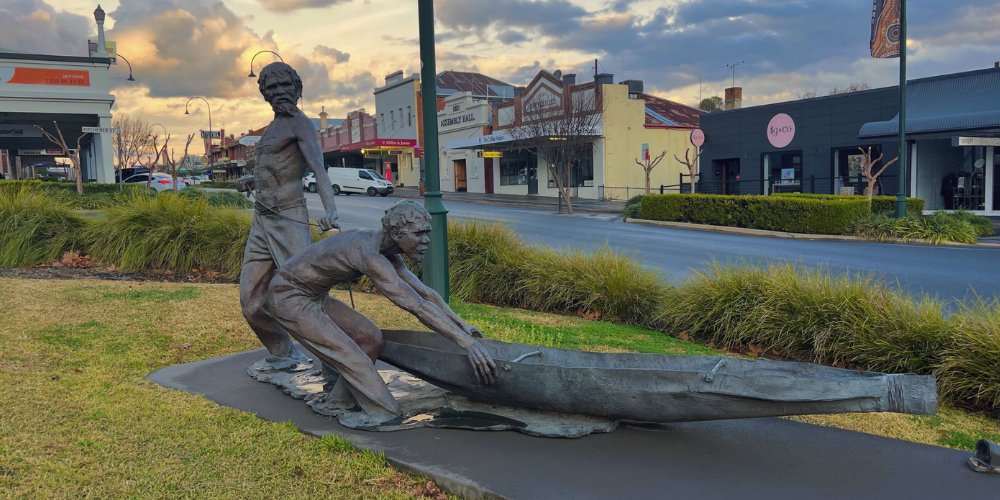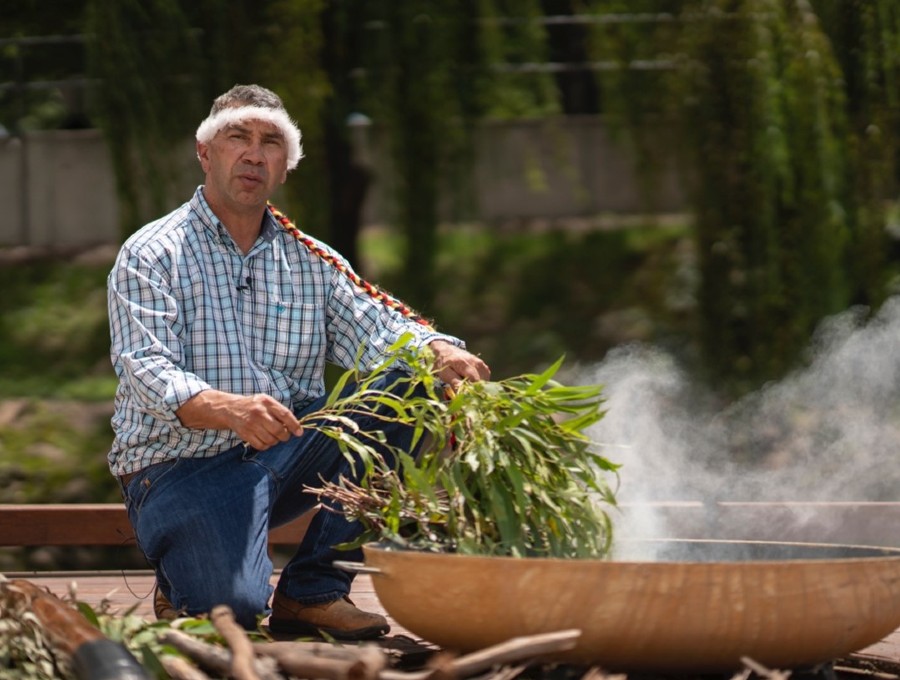The community of Gundagai have acted to ensure that two national heroes, local Wiradjuri men Yarri and Jacky Jacky, are known by anyone in their town and beyond.
The town has honoured the acts of two of the greatest lifesavers in Australian history through the erection of a bronze sculpture in the main street.
Yarri and Jacky Jacky saved the lives of a third of the town’s population during the Great Flood of Gundagai in 1852 – one of Australia’s greatest natural disasters – rescuing at least 69 people from their rooftops using only a bark canoe and a rowboat.
‘You can imagine, taking the canoe into the water. Bringing people in from off of roof tops and out of trees… no motor or anything on the canoe… the river, as it was, in full flood. And keep doing that for three nights,’ describes Uncle Peter Smith, a Wiradjuri Elder.
The push for recognition
At the time, the men received a small reward and inscribed breastplates. Their contribution to the survival of the township was not given the place in history it deserved, but Aboriginal and non-Aboriginal families in Gundagai never forgot the story of bravery and survival. It was acknowledged in small ways over time as community attitudes shifted and their capacity to honour Aboriginal peoples grew.
Wiradjuri Elder Aunty Sonia Piper notes not only their heroism, but its significance. ‘I always think that must be the first time with the reconciliation, because those two Aboriginal men didn’t care what colour people they rescued.’
Ian Horsley’s family has lived in Gundagai for generations, and he feels a debt to Yarri and Jacky Jacky.
‘[I have] a great-grandfather saved by the two men in the Gundagai flood. We’re descended and here is a result of their bravery.’ Ian recounts how his father would pass on the story and recognised the heroes by donating a sundial in their honour and naming part of his property ‘Yarri’.

Keeping the story alive
Elders have worked to keep the story alive by visiting schools and teaching local history. In the 1980s, the council erected a plaque for the men, and in the 1990s, a park was named in their honour. But, as Ian notes, it was still not the recognition he and others had wanted.
Several efforts were made over the years to mount a sculpture, but it wasn’t until Cootamundra-Gundagai Regional Council began a new town plan in 2014 that support was formalised and adequate funding finally secured. The plan set aside a place for recognising the heroes and the council called for community members to join a committee to develop the memorial.
The 12-person Yarri and Jacky Jacky Sculpture Committee included Wiradjuri Elders, descendants of those rescued, and council members. They worked together to raise funds and make decisions, meeting a total of 22 times over three years. Their common interest and intention drove their shared goals, but it was important for the Elders to have a privileged voice. They insisted the statue be on a main thoroughfare, petitioned to make the sculpture in bronze (a mark of respect regularly accorded to white historical figures), and successfully advocated for the confronting historical context and flood story to be portrayed in full on the signboard accompanying the sculpture.
All of these requirements enhanced the truth-telling power of the memorial. The views of the Elders were properly heard and understood partly because three councillors served on the committee, indicative of the regional council’s commitment to the project. A lifelong mutual respect was established between committee members through this process.
I think it's made a big difference in Gundagai and as well as in the wider community... the more people know the better it will be.
Unveiling
In 2017, on the 165th anniversary of the flood, a bronze sculpture was unveiled with a march down the main street of Gundagai and an official ceremony. The whole community attended.
‘We couldn’t have been any prouder on the day that the opening was and we seen all the people around in town and in the main street in Gundagai and it made us feel so proud,’ recalls Aunty Sonia.
Uncle Peter notes, ‘I think it’s made a big difference in Gundagai and as well in the wider community… people will come now to see the statue and read the stories that’s on the board. And the knowledge is getting out there and we’re going to keep telling the story for ever and ever because the more people know the better it will be.’
Committee member Miriam Crane puts it this way: ‘It’s not just about the story being out there so that people can have respect, it’s about then the flow-on effect of that on the people who are affected by the increase in respect that occurs in the broader population.’
Ongoing impact
With the courageous act written formally in history, it is hoped this might be a platform for nation-wide education on this important event.
The statue is a continuing site of truth-telling and healing, with a commemorative corroboree on the 170th anniversary of the flood, drawing several hundred people together in celebration.
Wiradjuri/Wolgalu man Joe Williams led the event organisation. ‘Many elders have never had the opportunity to learn, practise or participate in these types of gatherings due to the generational challenges that followed the invasion,’ he explains.
‘There were many local Elders who came up to me after the evening, some crying with immense pride. Not only because it was the first time they witnessed such an evening, but they got to watch their nephews, nieces and grandkids partake in the cultural activities that they were forbidden to do.’
This account of truth-telling in action is based on a case study from the Recognising community truth-telling: An exploration of local truth-telling in Australia report. The collaborative study between Reconciliation Australia and Deakin University’s Alfred Deakin Institute for Citizenship and Globalisation documents 25 community truth-telling projects. Read the full report.


